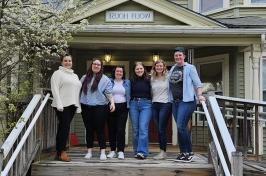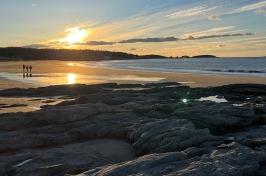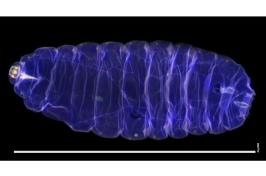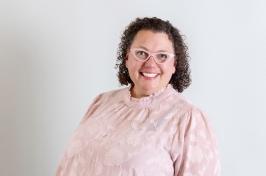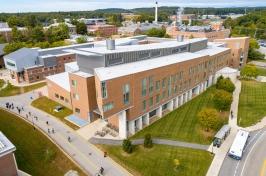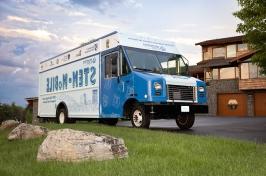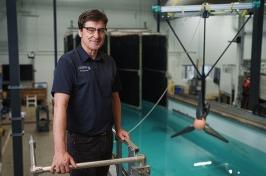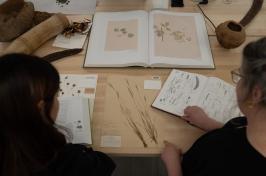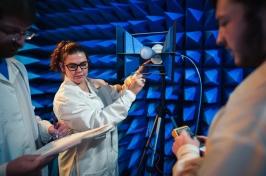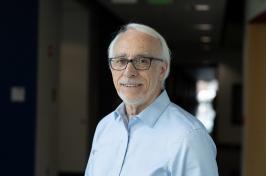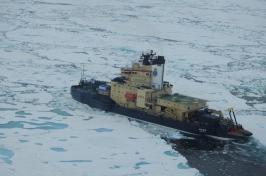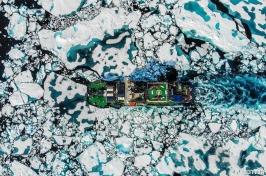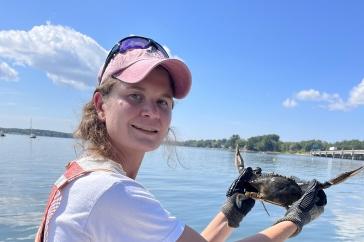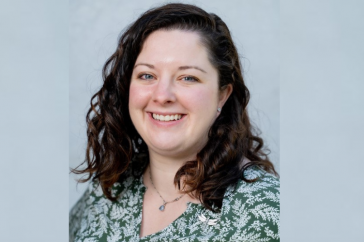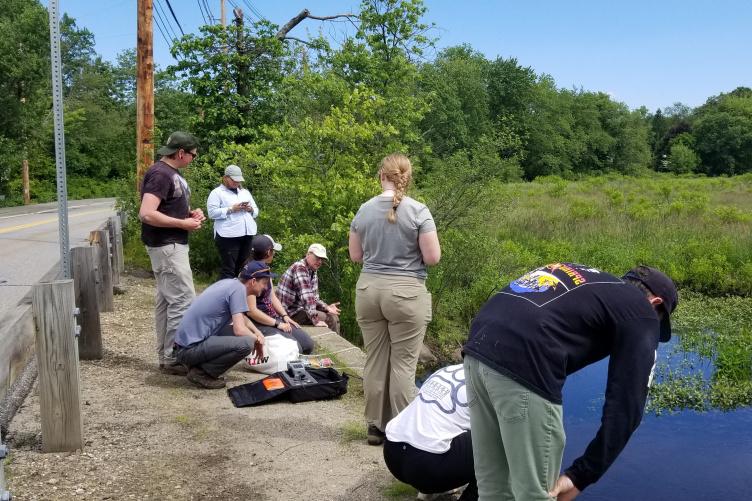
Members of the UNH community learn about Paige Clarizia's sampling process at a few of her sites, 包括Ruth Varner(顾问/委员会成员), Wilfred Wollheim (committee member), Paige Clarizia, 克里斯·惠特尼和德鲁·罗宾逊(W. Wollheim), Cindy Bova和Carter Snow(本科SURF获得者), 他们都在伊普斯维奇河流域工作.
Paige Clarizia, a graduate student in UNH’s department of Earth sciences and recipient of UNH’s Summer Teaching Award Fellowship, is spending her summer collecting data on greenhouse gas emissions from the Ipswich watershed in Massachusetts.
Each week, Clarizia沿着分水岭访问了六个地点, 从上游的源头到河流湿地的出口, 测量甲烷和二氧化碳的排放量.
“Aquatic ecosystems are major sources of greenhouse gas emissions (GHG),” Clarizia says. “随着全球平均气温持续上升, 温室气体排放的时空测量, which are currently unavailable, are vital for evaluating regional and global carbon budgets and for predicting future emissions.”

Clarizia’s interest in aquatic ecosystems began while she was pursuing her Bachelor of Science degree in environmental sciences at UNH. Through the 大学生北方生态系统研究(NERU) summer program, Clarizia有机会在David Bastviken手下学习, one of the world’s experts in emissions of greenhouse gases from aquatic ecosystems. Two years later, Clarizia获得了著名的富布赖特奖学金 to spend a year at Linköping University in southern Sweden to work once again with Bastviken.
During her year in Sweden, Clarizia worked closely with Bastviken to develop an automated system that measures GHG emissions from peatlands and freshwater ecosystems. Such self-sustaining technology would allow researchers to gather data in the field without needing to be physically present — “a way to collect more time-intensive data without all of the labor,” Clarizia says.
Now, 她即将完成地球科学硕士学位, Clarizia is drawing together her past experiences to inform the current project. Although she did not end up using the automated technology that she helped to develop in Sweden, Clarizia在她的研究教育中发现了一个清晰的连续性. “All of my data collection ideas and techniques came from things I learned while in my Fulbright,” Clarizia says.
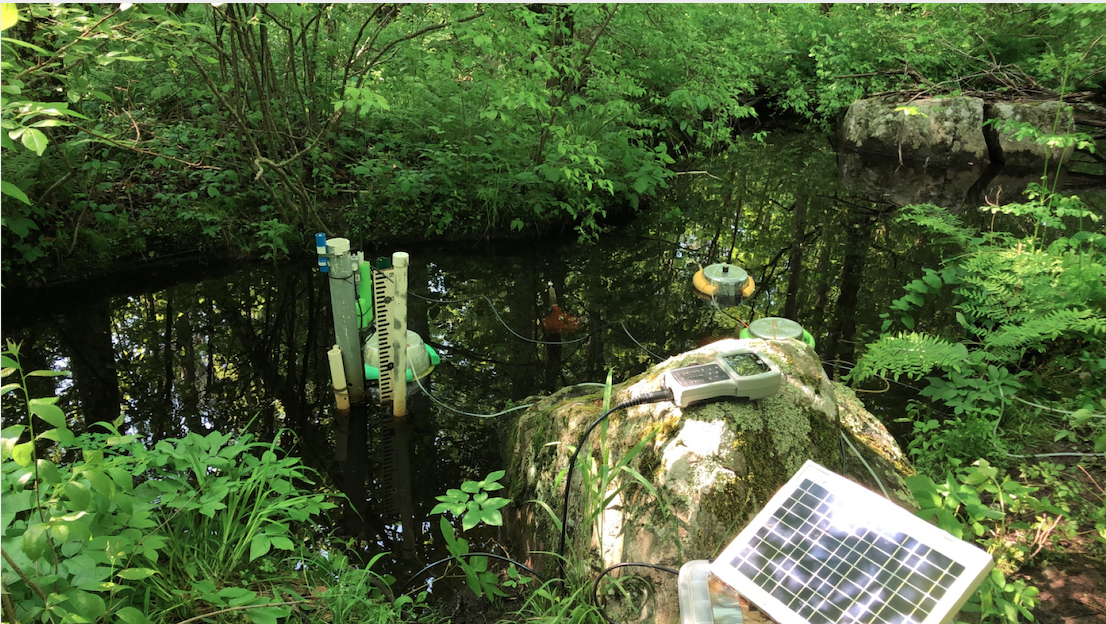
A huge part of what makes Clarizia’s research excellent is her investment in personal relationships, 通过同伴指导和社区参与. “Working with undergraduate students is something I love most about being at UNH,” Clarizia says. 无论是在课堂上解释概念还是在实地工作, Clarizia has made a conscious effort to pass on the kind of mentorship she received as an undergraduate. Her focus on community care has made Clarizia a well-deserving recipient of the STAF, an award which seeks to support the summer research of teaching assistants who have performed exceptionally well.
As for the greater community, Clarizia has been able to build upon a preexisting partnership between the Ipswich watershed and UNH. However, her specific field work has sparked curiosity in an unexpected population — the local police department. “Each week I talk to an officer who received a call about a curious young woman doing something sketchy near the water,” Clarizia says. “So, each week, without fail, I meet a new officer who is checking on a local annoyance call. 现在,我们对这件事一笑置之,互相打招呼说“下周见”.’ They are all surprisingly curious and supportive of the research that I am doing with UNH, so it is always a pleasure talking with them.”
“This work is vital to understanding how wetlands will contribute to global warming,” says James Pringle, professor of Earth sciences and integrated applied mathematics. “甲烷是大气中第二重要的温室气体, and its largest natural source is in wetlands where it is generated by anaerobic bacteria. 她的测量结果令人印象深刻,”普林格尔说.
Thanks to her STAF funding, Clarizia今年秋天将完成她的硕士论文, and looks forward to contributing her unique dataset to the freshwater aquatic ecosystem and greenhouse gas emission scientific communities.
-
Written By:
Lily Greenberg '21G | Grad School














